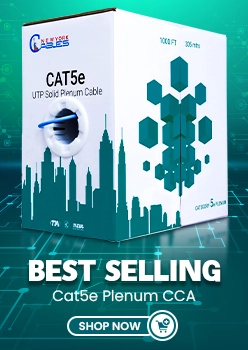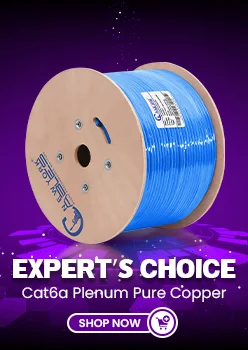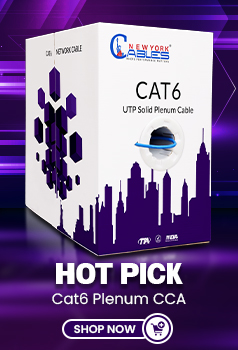
When we talk about data centers, various things come to our mind. Generally, people think about thrilling technologies like high-density server racks and liquid cooling systems. But data centers are more than these things. First, let’s give you an idea about data centers. Datacenter, in any building, is a centralized place where they use computers and networks to store, process, and distribute data. Now cables are one of the most important things in a data center.
Data centers use different kinds of cables. Usually, it depends on the infrastructure of your data center. Having the best cable for your data center can be cost-effective and it can increase efficiency. In this article, we’ll discuss the different strategies about the usage of cables in data centers.
4 Strategies that will get the Job Done
You can use different strategies for cabling in data centers. If you use all these plans, things will work out for you. These plans include:
- Usage of High-Quality Cables
- Structured Processing
- Proper Documentation
- Pre-Terminated Cables
Usage of High-Quality Cables
Always use the premium quality cables for your data centers. Mainly, there are types of cables that are used in data centers: copper and fiber optic. If you opt for the older cables, they’ll cost you less but they would create a lot of problems for you. Even older versions of Cat cables will not do any good for today’s robust data centers. They will lack speed and cross-talk would be one of the major issues.
You should always go the good quality copper cables. These cables cut down the cost and they are highly effective in terms of performance. Copper cables can cover a long distance and they can transmit data at high bandwidth.
Fiber optic is another exciting option for data centers. One of the major benefits that come with fiber optic is that they don’t have electromagnetic interference issues. These cables emit photons and that is why their signal can travel a long way. There are very few data centers that use only one kind of cable. The best option would be to use the amalgamation of these two cables to get the best results.
Structured Processing
A structured cabling plan for any data center is extremely important. No matter what your deployment needs are, always go for the structured plan. A small data center room that has few cables and data points can be easily managed but on the other hand, large data centers are really hard to manage without proper planning. A poorly managed data center can cause a lot of problems soon.
In structured planning, everything is predefined: from pathways to connection points. These systems are test before the deployment. This system contains a well-organized and labeled set of cables. The installation cost of this system may be high but its operational cost is very low. These systems are super easy to manage and they cut down the efforts in half. There are proper airflow plans and end-to-end identifications in structured systems.
Proper Documentation
There is a lot of cabling in data centers. If you don’t maintain a proper record of all the installations, you can easily lose track. Proper and detailed certification can help you draw a better plan for future installations and saves a lot of your precious time as well. Without proper documentation, the engineers would be lost for hours figuring out the whole plan of your data center.
Pre-Terminated Cables
Pre-terminated cables cut the time and cost associated with on-site connector terminations and testing. Connectors on these cables are machine-polished and thoroughly tested before deployment in the data centers. These cables provide an effective solution to networking equipment. Once these cables are fully installed in the system, data centers can maintain a record for the future reference.
Cabling may not seem important but they are vital for any data center. If you work on all these strategies, you’ll come up with a good plan for your data center.
| Specification | Cat5e | Cat6 | Cat6a |
| Cable Jacket | Plenum, Riser & PVC | Plenum, Riser & PVC | Plenum & Riser |
| Wire Gauge | 24-AWG | 23-AWG | 23-AWG Highly Twisted |
| Frequencies | 350 MHZ | 550 MHZ | 750 MHZ |
| Installation Temp | 0°C to 60°C | 0°C to 60°C | 0°C to 60°C |
| Pairs | 4 Twisted Pairs | 4 Twisted Pairs | 4 Twisted Pairs |
| Package | Easy Pull Box | Easy Pull Box | Wood Spool |
| Colors | Black, Blue, White, Red, Green, Yellow | Black, Blue, White, Red, Green, Yellow | Black, Blue, White, Red, Green, Yellow |
| Standard Compliance | ETL, FCC, CE, CSA, ISO/IES, RoHS | FCC, CE, CSA, ISO/IES, RoHS | ETL, FCC, CE, CSA, ISO/IES, RoHS |




